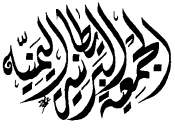| The British-Yemeni Society |

|
Book
review
Yemen: World Bibliographical Series, Vol 50
Revised edition compiled by Paul Auchterlonie Not long after Yemen’s unification in 1990, my name was recommended to Clio Press to compile the revised edition of Volume 50 (Yemen) in their Wodd Bibliographical Series. The object was to expand the book to include the many works published since Rex Smith compiled the first edition (The Yemens) in 1984. All I can say is thank goodness I didn’t do it; I could never have produced as thorough, as professional and as useful an edition as that which Paul Auchterlonie (Exeter University) eventually completed in 1997. Auchterlonie brings to this task the diligence and the resources of a university librarian, which stand him in the best possible stead to follow CIio Press guidelines for the series: to assist other librarians in building up their stock of material on a particular country and to answer queries of readers seeking good books on a wide range of topics concerning that country. One can now turn to this volume to find publications on just about any subject imaginable: from ‘Travel Guides’ to ‘Mass Media’, with the classic categories of Geography, History, Social Conditions, Politics, Trade and Industry, Architecture, Science and Technology, Foildore and many more in between. Particularly useful are the brief comments describing the contents and value of each entry. It is staggering to think that Auchterlonie read every one of the 938 entries, but I can find no instance where his annotations are not accurate and insightful, if occasionally prone to be negative about what the work does not include, instead of concentrating on what it offers. One has the feeling that he read introductions particularly thoroughly, which is where many authors berate themselves for their study’s shortcomings — as in the case of Barbara Croken’s superb doctoral thesis for Harvard on Zabid under the Rasulids of Yemen [323]. It goes without saying that the niceties of bibliographical reference are rigorously observed, making this book an absolutely reliable tool for scholars and writers. But for the armchair Yemenophile, this is also a wonderfiil reference for older works of travel, social affairs, colonial administration, history — which one discovers are now available in reprint. I am thinking, amongst others, of H.C. Kay’s Yemen: its early medieval history [367] which has for twenty years only been available to borrow from one library in London. Niebuhr’s Travels through Arabia [114], the Handbook of Yemen [71], Hunter’s An account of the Arab tribes in the vicinity of Aden [385] and others appear here with reference to modern reprints. I am also filled with admiration for the abundance of ‘one-off’ articles which have been ferreted out and diligently cross-referenced. Each topic section is complemented by these contributions — gleaned by Auchterlonie from journals, symposia, museum catalogues, proceedings, and other ephemera. Festschrifts, too, are treated in the same way Another act of intellectual generosity is the translation into English of titles from works in other modern European languages. While my innate academic snobbery frowns on this form of condescension, I must admit it’s immensely useful! But on the subject of other languages, I was sorry not to see some works in Russian included, even if they might only be available in specialist libraries. These delve into fields such as the archaeology, material culture, conservation, science and anthropology of former South Yemen, and should not be neglected. More importantly, while I appreciate that the purview of the volume under review expressly excludes works in Arabic, it is nevertheless inconceivable to me that some mention is not made of the Encyclopedia ojYemen (al-Mawsu’at al-Yamaniyyah in 2 vols., Beirut, 1992, by Ahmad Jabir ‘Afif et al.) with many articles by British academics and many more byYemeni scholars, ProfessorYusufAbdullah and H.E. Dr Hussain al-’Amri prominent among them. It was distributed to libraries of record in this country and America; it is a baseline tool for anyone with even a limited ability to read Arabic; and, most significantly, it is an unique compendium of what Yemen understands about itself. For this work alone, the rules of engagement should have been relaxed. The end of a review is normally the place to slip in a list of cavils to demonstrate the superior savvy of the reviewer! I have my little stash — crankiness about transliteration decisions and minor typographical errors — but I lack the hubris to find petty fault with such a splendid achievement. If the discount (£20) to members of the Society is still valid, buy the volume immediately. If not, then buy it for yourself for Christmas anyway. I promise that you will dip into it frequently for pleasure as well as for profit. It contains many old friends, both books and authors. It is an introduction to new gems. It is an essential companion to the love affair we in this Society all share with Yemen. FRANCINE STONE, November 1998 |